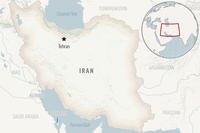For Rep. Mike Turner, R-Ohio, it's a project at Wright-Patterson Air Force Base. For Sen. Bob Casey, D-Pennsylvania, it's submarine propellers. For Rep. Roger Williams, R-Texas, it's a barracks at Fort Hood. And for Rep. Elaine Luria, D-Virginia, it's ship maintenance.
Their concerns reflect the increasing unease of congressional lawmakers on both sides of the aisle that border wall funding will take money from politically popular military construction budget projects in their states or districts -- projects that produce jobs and tend to ward off potential primary challengers.
Some of those lawmakers have begun speaking out about their projects ahead of the expected vote in the House on Tuesday on a "motion of disapproval" of President Donald Trump's declaration of a national emergency.
Overall, the military construction budget approved last year by Congress called for funding projects in 38 states and 14 overseas locations.
Republicans have been careful to note that they support the border wall, while stating that diverting money from the military construction budget is probably not the best way to go about building it. They also questioned whether the emergency is in line with the Constitution's granting of the "power of the purse" to Congress.
In a statement last week, Turner said, "I strongly believe securing our border should not be done at the expense of previously funded military construction projects."
Last year, he helped get $182 million for a new complex at the National Air and Space Intelligence Center at Wright-Patterson, near Dayton, into the fiscal 2019 defense budget.
Casey complained about the potential hit to nearly $200 million in military projects for Pennsylvania, including $71 million to expand a submarine propeller manufacturing facility in the Philadelphia Navy Yard and at least $85 million to improve facilities at Pittsburgh's Air Force Reserve station to accommodate the C-17 Globemaster III.
Luria, a retired Navy commander, has a laundry list of "newly vulnerable Virginia military projects" in or near her district.
That list includes $26.1 million for a ship maintenance facility in Portsmouth, Virginia; $12.7 million for fuel facilities replacements at Joint Base Langley-Eustis; $10 million for a cyber operations facility at Langley-Eustis; and $8.9 million for a special operations forces project at Naval Air Station Oceana Dam Neck Annex.
Williams is worried about $61 million in funding for barracks at Fort Hood "that literally were condemned and literally were falling down," he told The Austin-American Statesman.
In the Feb. 15 declaration of a national emergency, Trump and White House officials said they would seek up to $8.1 billion for new border wall construction. About $3.6 billion will come from the $10.3 billion in the military construction budget; $2.5 billion from military counter-drug funds; and about $600 million from Treasury Department forfeitures, officials said.
An additional $1.375 billion for border security was in the bill Trump reluctantly signed to avoid another partial government shutdown. He had been seeking $5.7 billion in the bill for the wall.
Acting Defense Secretary Patrick Shanahan and other Defense Department officials have indicated that funding to fix and improve dilapidated housing for military families will not be diverted for the wall.
-- Richard Sisk can be reached at Richard.Sisk@Military.com.












